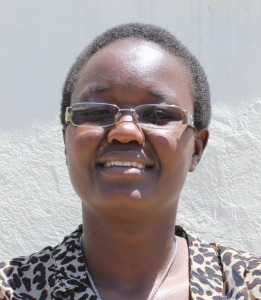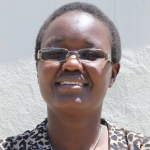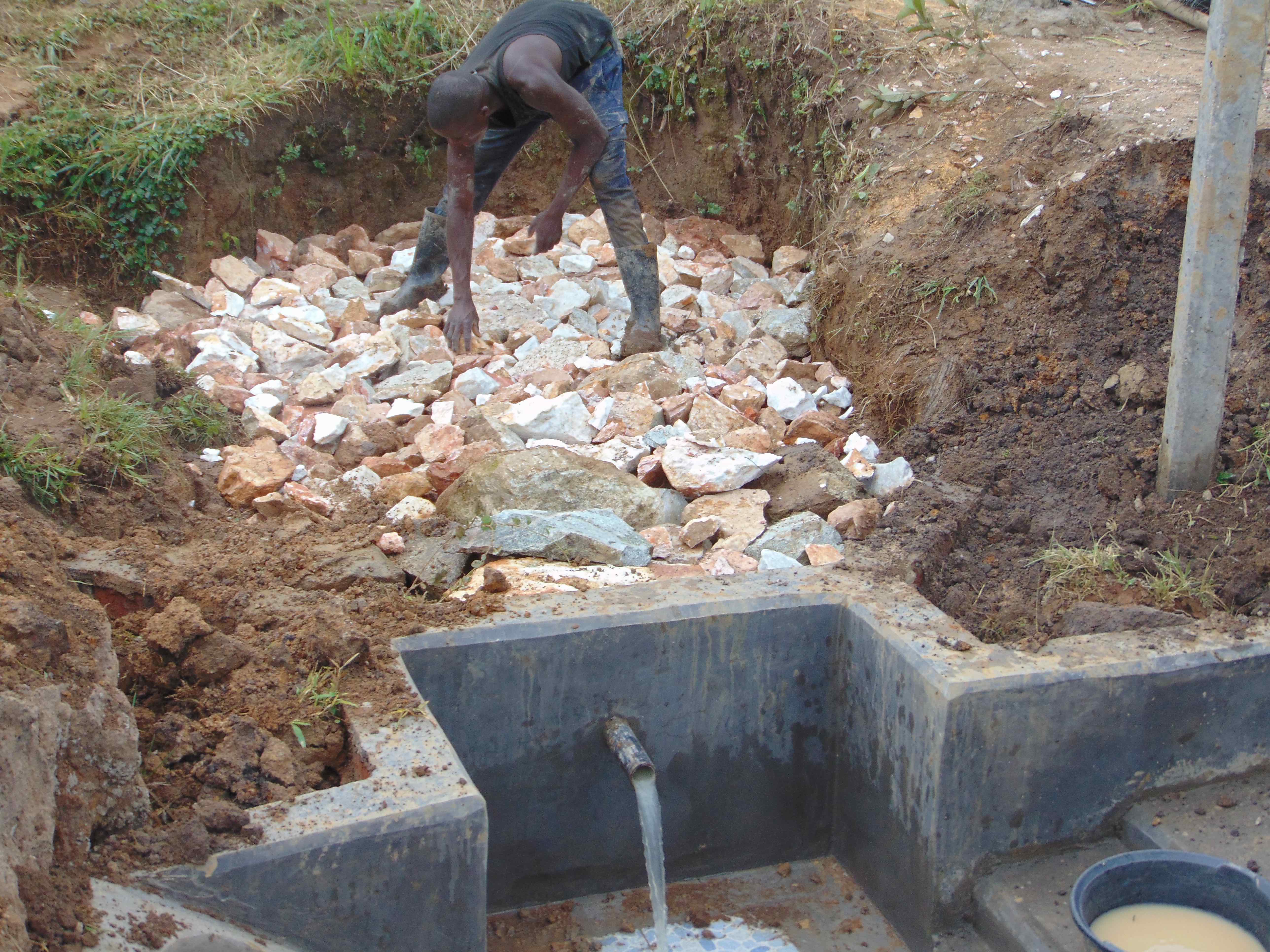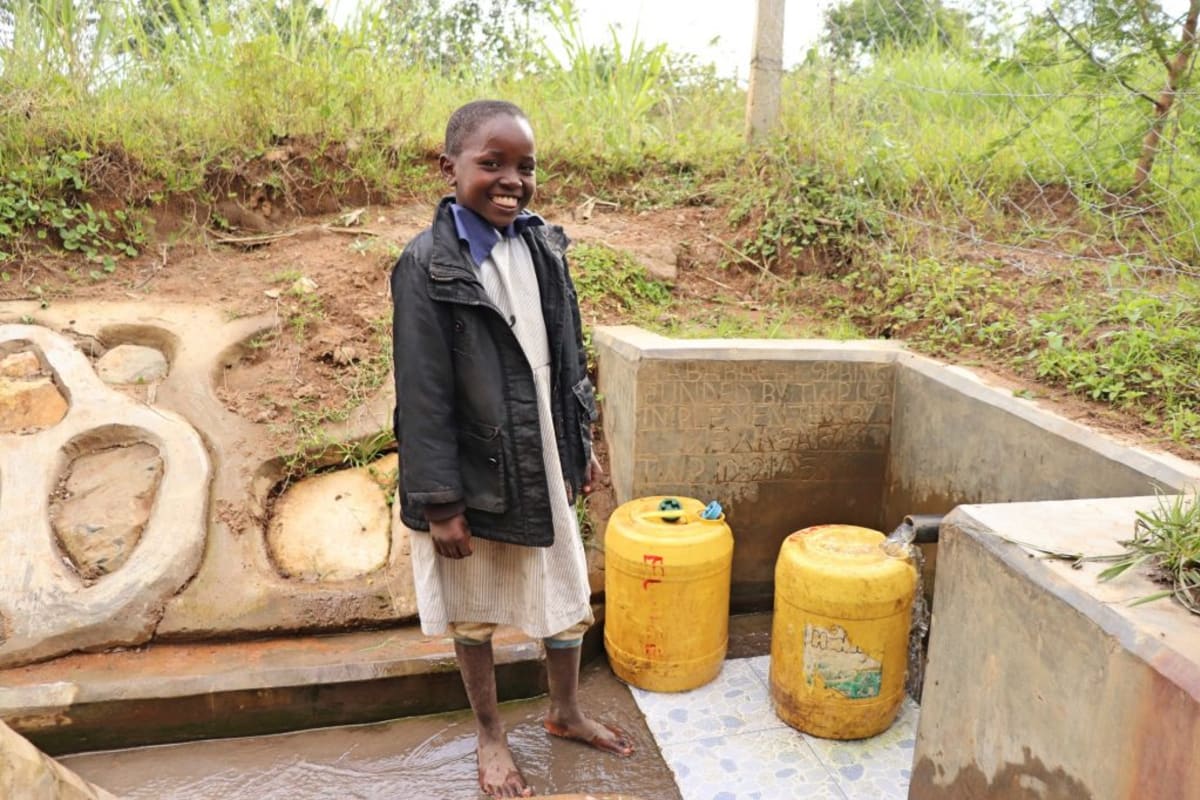"It has been our desire to access clean water for so long...The spring has a lot of water, yes, but the challenge is it is open. At the same time, using a scooping jug is not a joke because a person gets tired. I feel for the disabled in our village because it forces one of us to help fill the container, then help them to carry water home. Protecting this spring will be our dream come true," said Mrs. Agnes Musira, a farmer and mother living in Makunga Community.
Agnes is just 1 of the 200 people in Makunga who depend on Tabarachi Spring for water. The spring is not serving them well, however, due to its highly contaminated water and poor accessibility.
Community members here fetch water in the morning and evening, and as per the daily routine, there is guaranteed overcrowding, fights, and conflicts at the spring. These issues are exacerbated during the dry season when people from other villages come to Tabarachi Spring for its reliable water. The fights often start when someone blames the last person who fetched water of muddying the water or taking too long; in either case, everyone else has to wait even longer for the water to settle a little before fetching.
To fetch water, people must either submerge their jerrycan or fetch water using a smaller jug first which they then pour into their larger container. If too many people try to fetch water without letting the water rest, the spring water becomes too dirty to fetch. There is so much time wasted every day at the spring that could better be spent on productive work. Everyone just wants to bring clean water home so they can get on with the rest of their day.
Tabarachi Spring is full of harmful contaminants including green algae, water plants, bugs, and rotting leaves. Runoff from the rains carries farm chemicals, soil, and animal waste into the water. And when people fetch it, their containers, shoes, feet, and hands all add dirt and bacteria into the water.
Community members here report a high rate of typhoid and diarrhea among families who depend on this spring, especially among children. Sometimes people develop itchy skin and rashes after stepping in the water or using it to bathe; this gets worse when a lot of algae appears in the water. People lose their resources trying to pay for medical treatment for their water-related diseases. Adults also miss out on productive work time, while kids have to stay home from school every time they are sick. Some illnesses can last for weeks or even months in their worst form, especially when families cannot afford to pay for the medicine.
Access is the other major issue at Tabarachi Spring. Community members placed a wooden plank across the spring to try to keep them perched above water while they fetch it, but the board quickly and frequently rots no matter how often they replace it. Due to the near-constant queue of people fetching water, the wood also grows slick with water and algae of its own. Some people choose to simply stand in the water while they fetch it instead of risking a fall off the board that could lead to injuries and spilled water. The latest version of the plank we saw during our last visit was almost entirely submerged from use anyway, leaving community members with only a few small rocks to balance on.
"We will really enjoy fetching water if the spring is protected. The fear of falling inside the water will be in the past," said a hopeful Elvis, a primary school student in the community.
What We Can Do:
Spring Protection
Protecting the spring will help provide access to cleaner and safer water and reduce the time people have to spend to fetch it. Construction will keep surface runoff and other contaminants out of the water. With the community’s high involvement in the process, there should be a good sense of responsibility and ownership for the new clean water source.
Fetching water is a task predominantly carried out by women and young girls. Protecting the spring and offering training and support will, therefore, help empower the female members of the community by freeing up more of their time and energy to engage and invest in income-generating activities and their education.
Training on Health, Hygiene, COVID-19, and More
To hold trainings during the pandemic, we work closely with both community leaders and the local government to approve small groups to attend training. We ask community leaders to invite a select yet representative group of people to attend training who will then act as ambassadors to the rest of the community to share what they learn. We also communicate our expectations of physical distancing and wearing masks for all who choose to attend.
The training will focus on improved hygiene, health, and sanitation habits in this community. We will also have a dedicated session on COVID-19 symptoms, transmission routes, and prevention best practices.
With the community’s input, we will identify key leverage points where they can alter their practices at the personal, household, and community levels to affect change. This training will help to ensure participants have the knowledge they need about healthy practices and their importance to make the most of their water point as soon as water is flowing.
Our team of facilitators will use a variety of methods to train community members. Some of these methods include participatory hygiene and sanitation transformation, asset-based community development, group discussions, handouts, and demonstrations at the spring.
One of the most important issues we plan to cover is the handling, storage, and treatment of water. Having a clean water source will be extremely helpful, but it is useless if water gets contaminated by the time it is consumed. We and the community strongly believe that all of these components will work together to improve living standards here, which will help to unlock the potential for these community members to live better, healthier lives.
We will then conduct a small series of follow-up trainings before transitioning to our regularly scheduled support visits throughout the year.
Training will result in the formation of a water user committee, elected by their peers, that will oversee the operations and maintenance of the spring. The committee will enforce proper behavior around the spring and delegate tasks that will help preserve the site, such as building a fence and digging proper drainage channels. The fence will keep out destructive animals and unwanted waste, and the drainage will keep the area’s mosquito population at a minimum.

 Protected Spring
Protected Spring
 Rehabilitation Project
Rehabilitation Project


















 The tiles protect the concrete from the falling water's erosive force while beautifying the spring and facilitating easy cleaning of the spring floor.
The tiles protect the concrete from the falling water's erosive force while beautifying the spring and facilitating easy cleaning of the spring floor.

















